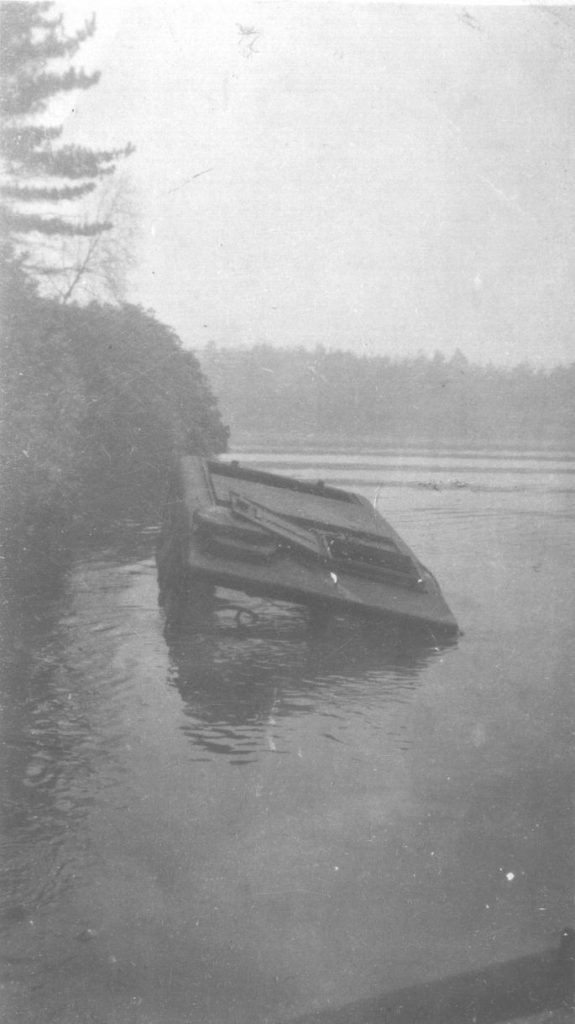
The HUP is NOT amphibious! An ORIGINAL World War II photo in the Colin Stevens Collection. Unfortunately I do not know where it was taken, possibly in 1944 during D-Day waterproofing and beach landing training? Canada? UK? N.W. Europe?
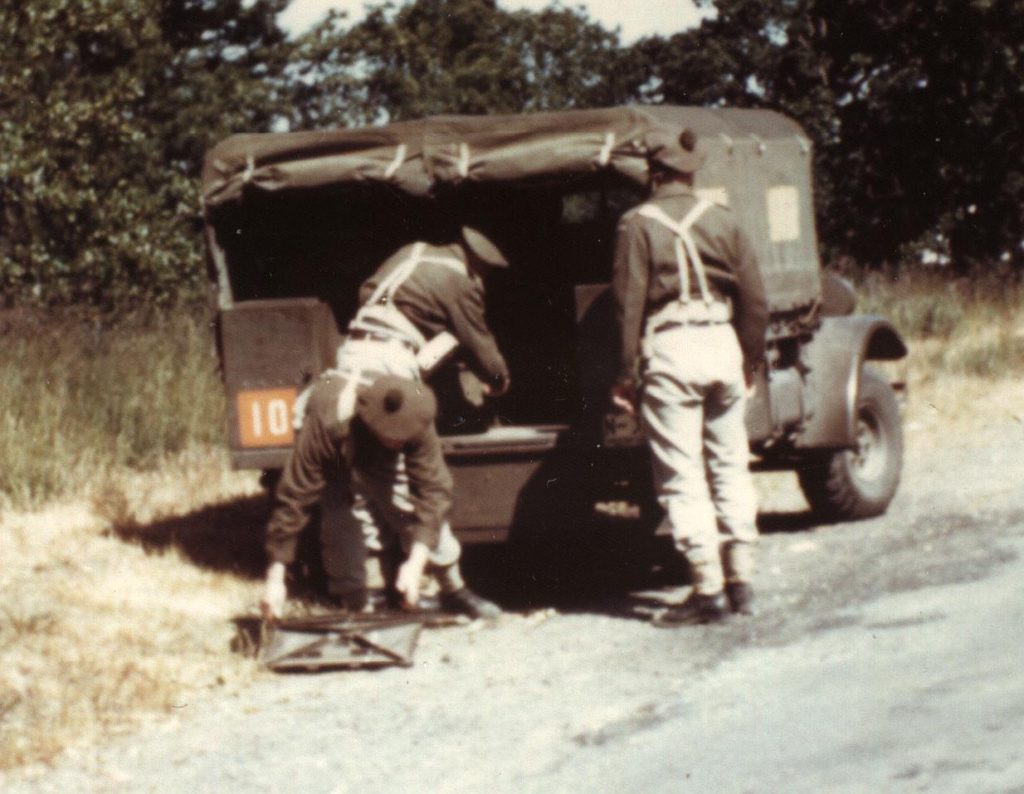
Circa 1944 original COLOUR photo of the 2nd Battalion, Seaforth Highlanders of Canada unloading a 3″ mortar from the back of a Cab 12 F-8 CMP (earlier known as a DND Pattern) truck. 8 Cwt = 1/2 ton cargo capacity cross country in effect. This is the long box model. The “10” is a unit sign as far as I know. Just under the left hand of the man standing on the right one can see the first part of the British Columbia licence plate. Military licence plates in BC started with the letter “N”.
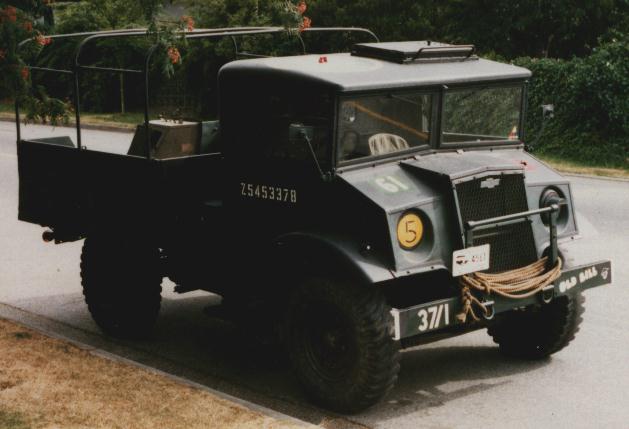
“OLD BILL” – A CMP collector’s dream machine.
September 1943 Chevrolet CMP Cab 13 when it was owned by Colin Stevens. The WD number on the door is original to this truck. This truck was made on Contract SM6050 with SCWE (Special Cold Weather Equipped) for the British Army and served overseas. It was totally rebuilt by the British Army in about 1948, had a new WWII engine put in (and the data plate was modified for the new serial number) then sold surplus with 200 miles on the new odometer.
See the story and photos of when I acquired it in Wheels & Tracks issues 16 (before the unveiling) and issue 17 (a full page coverage). The magazine ceased publication when writer/publisher Bart Vanderveen passed away.
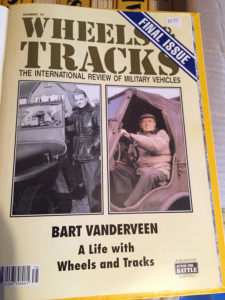
When I bought it, it had only about 1,200 miles on it, was up on blocks, cocooned and test run each year by Bill Legh, the Englishman who had bought it in southern England and brought it back to Canada in the late 1940s. He had the C-15 Parts and Maintenance manual MB-C2, and the tools were in the toolbox. The bows are original to this truck as are the wartime tires. The markings on the truck (including roundel on the roof of the cab) are added by me and are for my regiment, the Seaforth Highlanders of Canada in Italy in 1943-44. Roundel on the cab roof, unit sign 61 on green, formation sign 1 Cdn Infantry Div (gold maple leaf on red) and unit serial 37/1. The WD number Z5453378 is the original one for this actual truck, found on both doors under black paint applied when it was sold surplus. .
Gary Moonie restored the cargo box for me in trade for a 2B1 cargo box to use as a pattern for restoring his prototype Ford 15 Cwt. Brian Wood later bought this truck from me as I wanted to downsize to a jeep again, and Brian later donated it, along with about half a dozen other CMPs, to the Canadian War Museum in Ottawa, Ontario, Canada. It was on display in Vimy House.
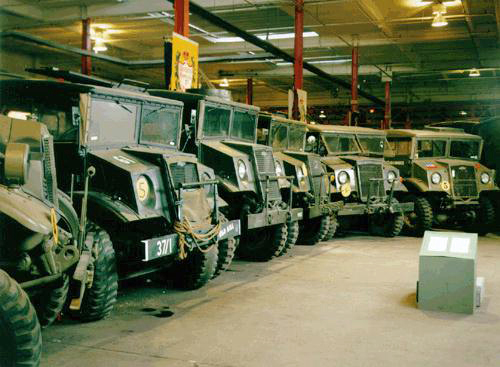
CMP PROTOTYPES AND PILOT MODELS
Prototype trucks of what became the CMP were made by Ford, Chevrolet and Dodge in Canada. Prototypes and pilot models were made in the late 1930s by Chevrolet and Ford. About late 1941 or sometime in 1942, Dodge also made a prototype CMP (or a handful of them) in Cab 13 style and I have found a photo of one of these in the 1945 DESIGN RECORD. Some collectors feel that they simply put a Dodge badge on the grille of an existing truck.
I believe that (1) PROTOTYPE refers to the first specimen made. Then the military would then make (2) PILOT models for testing. If these were successful, the military would fine tune the design, and then go into (3) PRODUCTION. Some people, including myself, have used the term prototype loosely.
51 Chevrolet pilot models were made in 1938 period and then 50 Ford pilot 15 Cwt. models were made at the very end of 1939 and early 1940.
FORD 15 CWT 1939-1940 PILOT TRUCKS
These Ford Pilot models were the basis for the DND PATTERN (later known as CANADIAN MILITARY PATTERN i.e. CMP) vehicles in service.
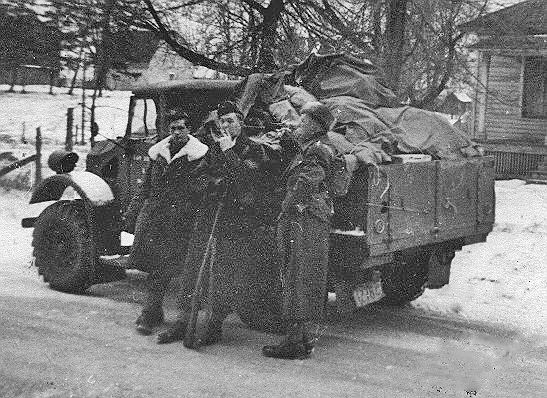
Ford Pilot Model 4×2 15 Cwt. serving with Lincoln and Welland Regiment, January 5 1941 Lieutenant (later Lieutenant Colonel) Arnott Hume (“Pete”) Stevens on the right. He is my father.Ford pilot model 4×2 15 Cwt on Jan 5, 1941 at Niagara Camp, Ontario. Lincoln & Welland Regiment, 50 Mile March. Left to right: Driver UNKNOWN; Sgt. Russ Trelford, Lieut. A. H. “Pete” Stevens (my father). Dad died of cancer in 1985 but I had spotted this photo in his album before then and had asked him about this being a pilot or prototype. I had noticed the distinctive headlights with the reversed shades. Dad pooh-poohed the idea and said it was just another 15 Cwt truck. (Colin Stevens collection)
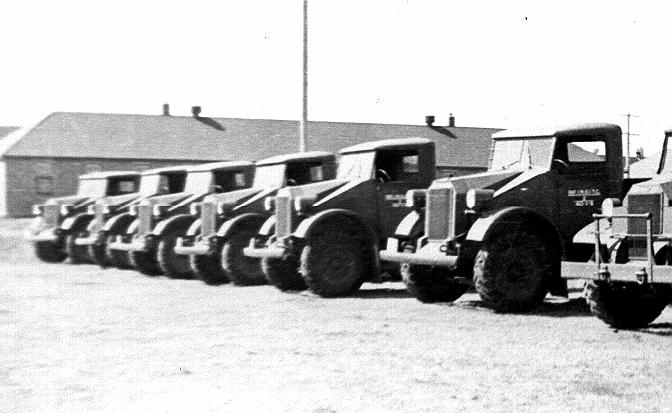
Pilot Ford 15 Cwt trucks at Dundurn, Saskatchewan in WWII. DND (CMP) pattern production 15 Cwt trucks on the far right. Note the different headlights and hoods (bonnets to our British friends). Left to right: six (6) Ford pilot models and 2 Ford Cab 11 15 Cwt on far right. The third vehicle from the right, a pilot, appears to have the markings:
INF (MG) TC
_____________
Z
______________
40-1-6
[Infantry (Machine Gun) Training Centre? This photo was taken at was at Dundurn, Saskatchewan (just South of Saskatoon).] The last number, “6”, MIGHT be an “8”]
SURVIVING DND – CMP PILOT MODELS
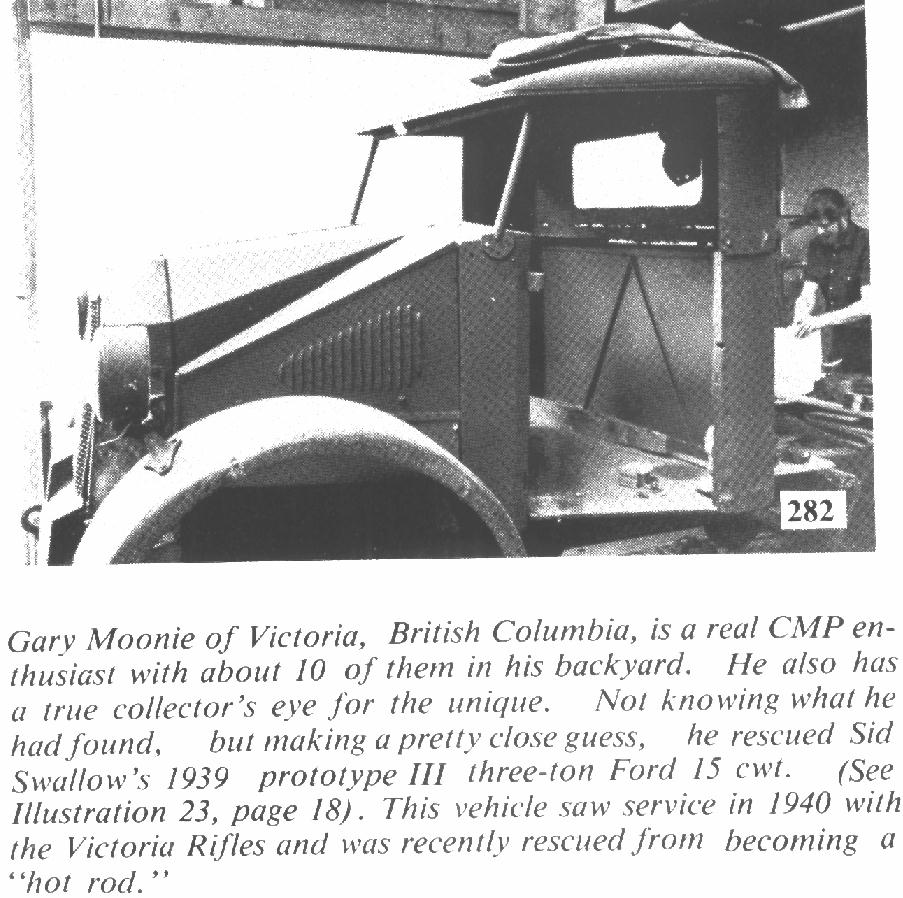
The first known survivor was in the Gary Moonie collection in Victoria and is now in the collection of Don and Katrinka Gordon. They have restored it. Chances are VERY high that it is the one shown beside my father in 1940 and the Lincoln & Welland Regiment was sent out the Nanaimo, BC soon after the photo was taken. The truck was found on the Saanich Peninsula I believe, just north of Victoria, an hour or two south of Nanaimo. Photo No. 282 page 199 BLUEPRINT FOR VICTORY by Dr. Bill Gregg. It has since been beautifully restored by Don Gordon and his wife Katrinka in Victoria.
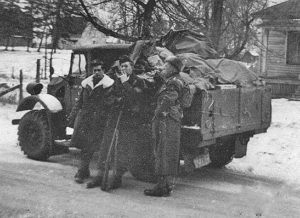
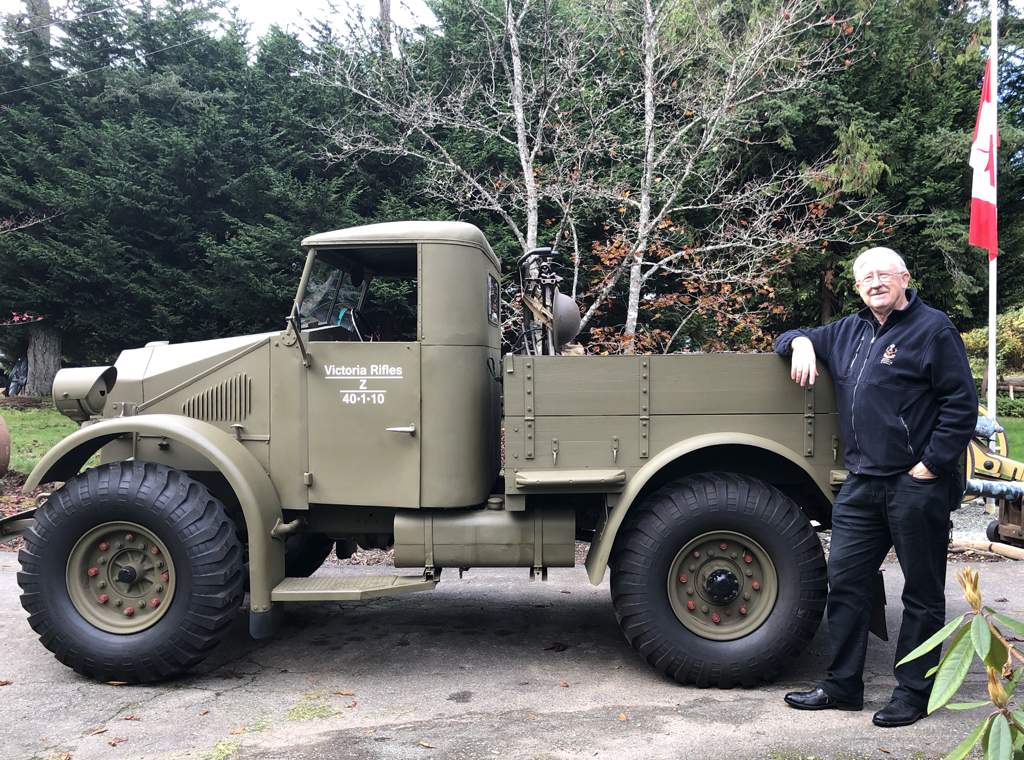

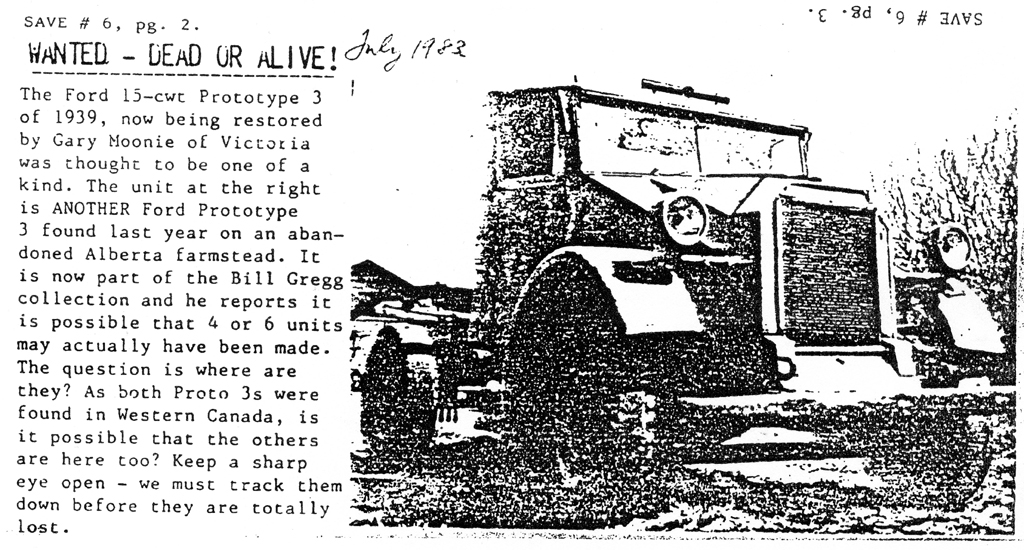
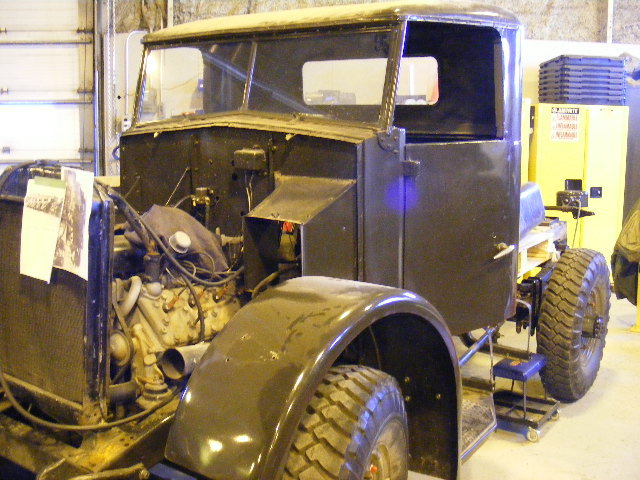
Canadian Collection. Shown here under restoration at the Royal Canadian Artillery Museum, CFB Shilo, Manitoba (Rob Love photo)
Another Ford Pilot Model 4×2 15 Cwt. was found in Alberta and went into the Bill Gregg collection in Ontario, and thence to the RCA Museum in Shilo, Manitoba.
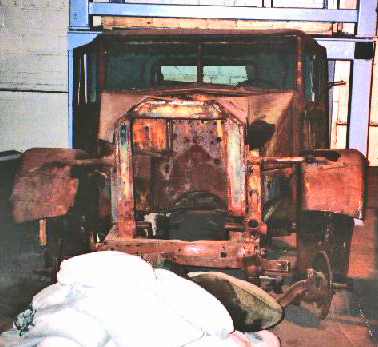
A third Ford Pilot Model 4×2 15 Cwt was found by Jim Fraser (?) of Arnprior in Ontario in the CFB Petawawa area? It is now in the Canadian War Museum.
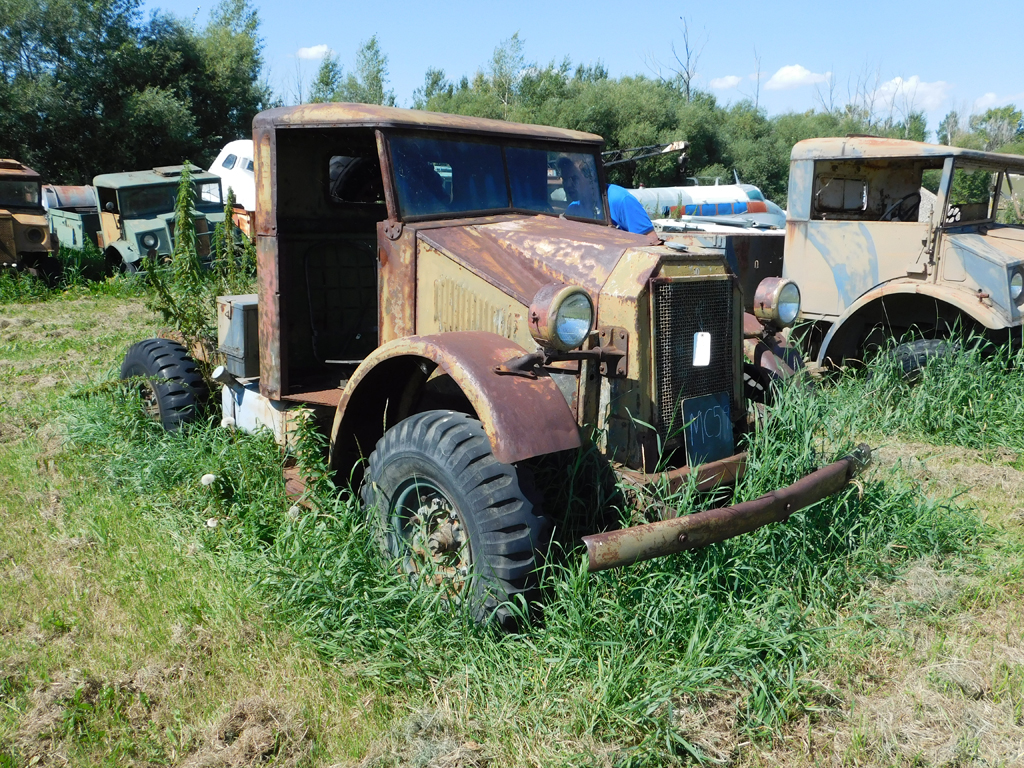
A fourth example is in a museum in Wetaskiwin, Alberta.
1938 CHEVROLET 15 CWT PROTOTYPE & PILOT TRUCKS
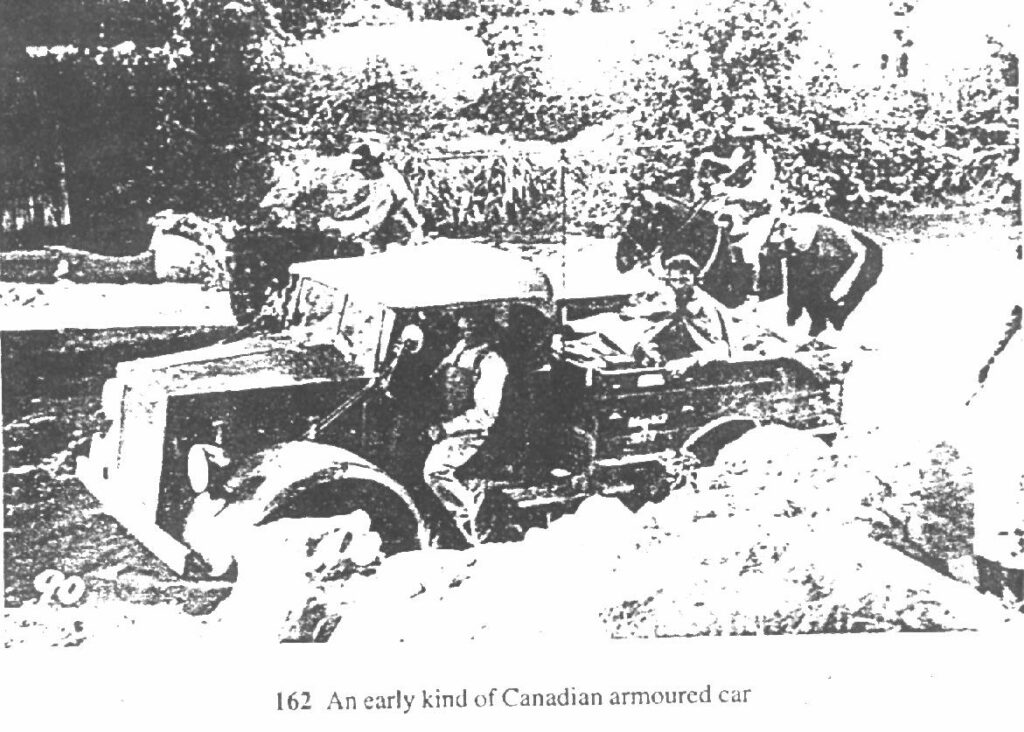
Although identified as “An early kind of armoured car” is is clearly not that and is a 15 Cwt truck. It has a canvas top so may be THE prototype (1937?). Note there is a radio aerial mounted with guy wires leading the the front fenders. Markings on the cargo body between the wheel well and the front edge of the box. appear to read:
B SQN. RCD
Z
____________
38-1-7
The last digit “7” (?) is indistinct. The photo appears in the book DRAGOON (History of the RCD) Chapter XIII Photo # 162. The second photo is # 169.
Gunner Rennels and C Battery Motor Transport (15 hundredweight) Shilo, Manitoba, 1939. This appears to be a hard roof 1938 Chevrolet pilot model. Photo from page 94 of THE CANADIAN GUNNER 1973 in story “Ball Buttons” by Captain E. H. Chamberlain, RCA (retired). The photos and stories were his own memories and souvenirs. FASCINATING! I have the booklet in my collection. The above scan is only from a Xerox of the article.
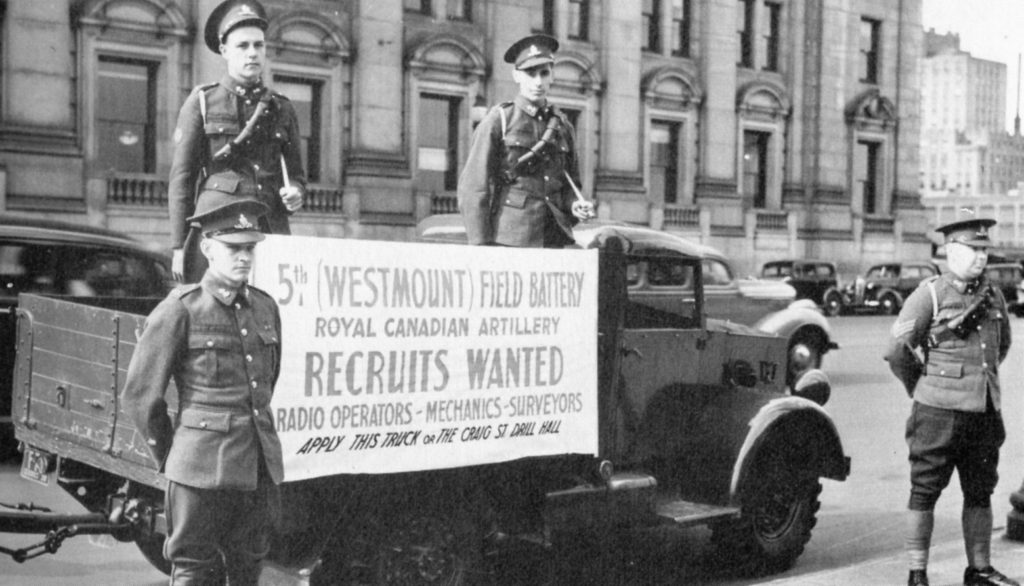
5th (Westmount) Field Battery, Royal Canadian Artillery recruiting, apparently in September 1939 in Montreal. The truck is a Chevrolet 1938 prototype or pilot model and is painted in a glossy colour, probably a dark green. Note that it is towing something, probably a limber and 18 Pr cannon on rubber wheels. This photo appears on page 23 of “A NATION FORGED IN FIRE – Canadians and the Second World War 1939-1945 by J. L. Granatstein and Desmond Morton”. Photo is from the Public Archives of Canada number PA-129610 I believe.
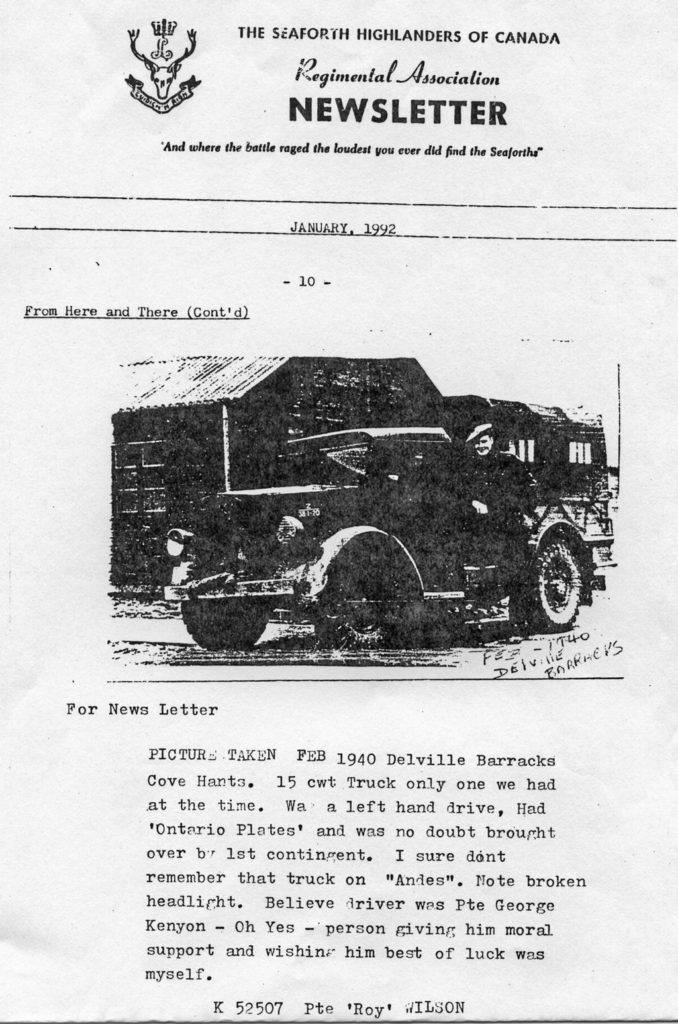
1938 Chevrolet truck in England in 1940 with the Seaforth Highlanders of Canada. DND number Z 38-1-10
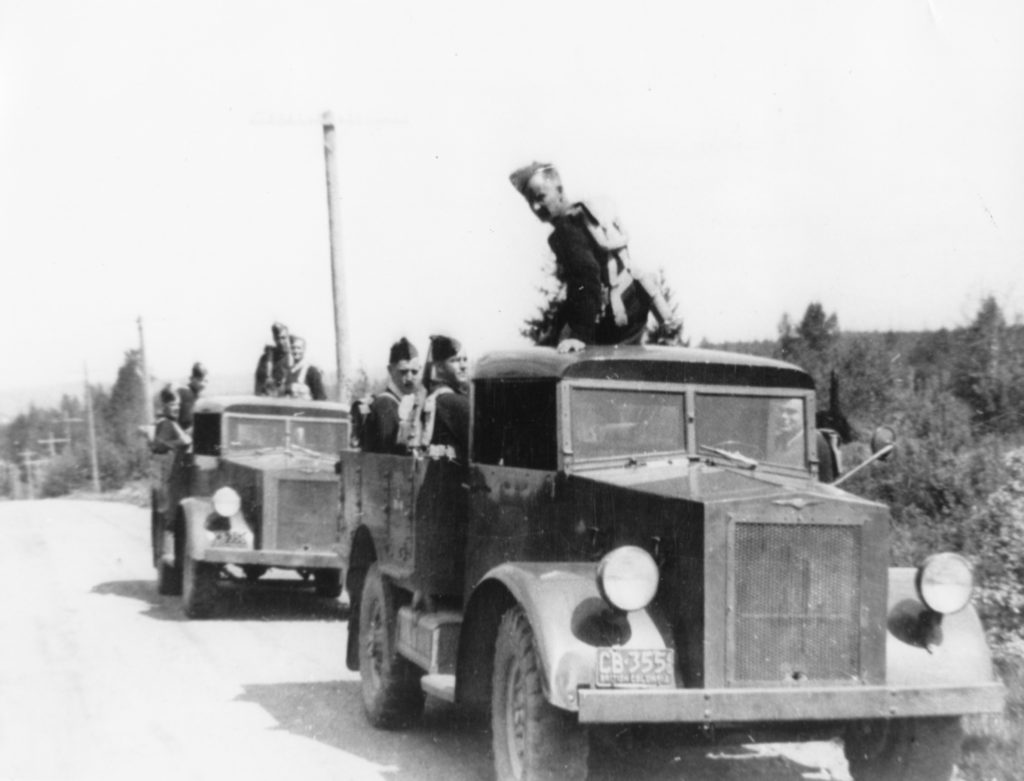
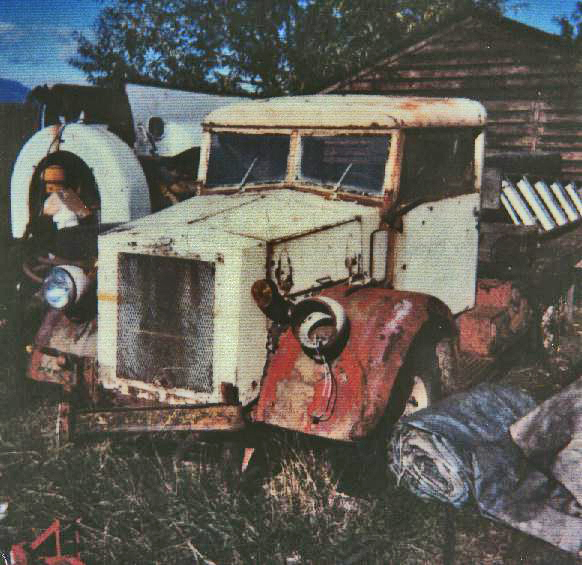
CHEVROLET 1938 15 Cwt. AS FOUND IN KELOWNA BY ALBERT SIEMONS
Chances are VERY high that it is one of the two trucks pictured above in use by the Westminster Regiment in BC in 1940.
Prototype or pilot model Chevrolet 15 Cwt as found in Kelowna by Albert Siemons. The chances are very high that it is one of the trucks in the above photo – the odds being perhaps 1:4. It was offered to me and I was sorely tempted as it is the ONLY known survivor and is a national treasure I believe! I resisted however and told the Canadian War Museum. They bought it. It is now at Vimy House in Ottawa. The civilian (?) flat deck had been removed by Aug. 2001.
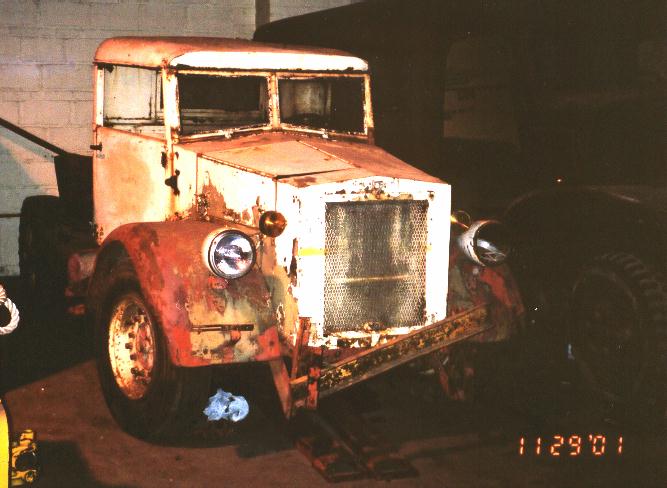
CHEVROLET 1938 TRUCK AS SHOWN ABOVE, NOW AT THE CANADIAN WAR MUSEUM . It has not yet been restored as far as I know and it likely still sitting in storage. PHOTOGRAPHED 2001 NOV. 29
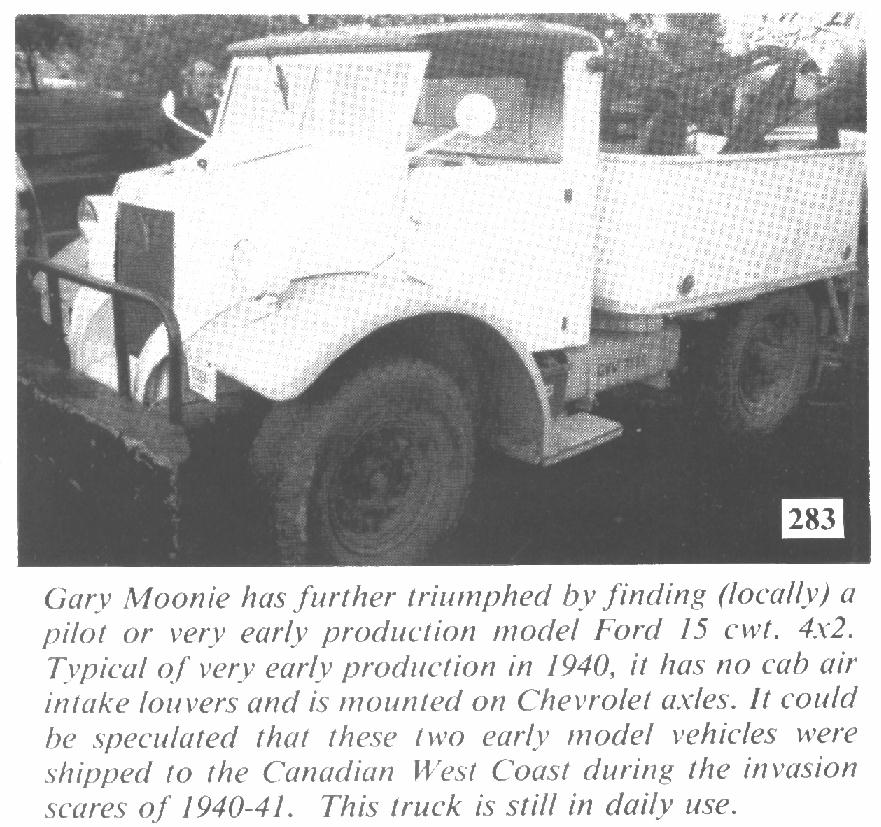
ONE OF THE FIRST PRODUCTION EXAMPLES – A FORD F15 4×2
This example was found by Gary Moonie, still in daily use as a garage tow truck prior to 1981. The truck was acquired by the BC Transportation Museum. When the museum was closed down, the collection was dispersed and this truck went to the Air Force Museum at CFB Comox. They had no use for it and traded it to Ian Newby who owns International Movie Services. It was stored OUTSIDE in Aldergrove, BC. In 1999 it was outside without even a tarp. In 2001 was it almost totally covered in brambles and was almost invisible. 🙁
DODGE PROTOTYPE CMP CAB 13
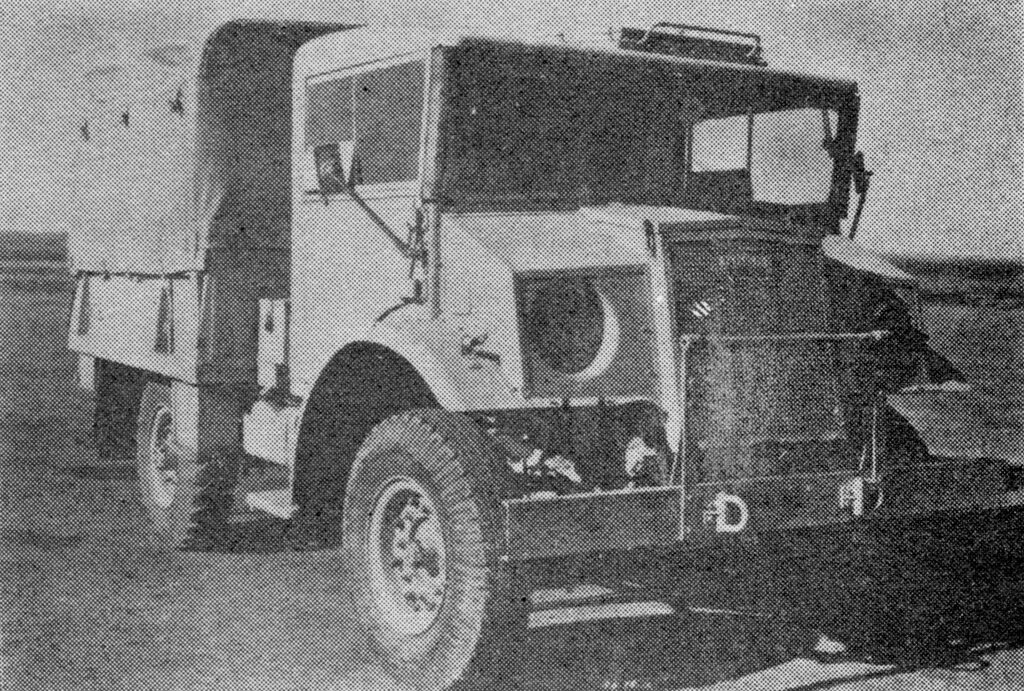
Dodge CMP prototype – Note large name plate on grill, and spindly front hubs. From DESIGN RECORD Volume 5 p. 27D of 2 book set. (Colin Stevens’ collection)
CANADIAN MILITARY PATTERN (CMP) vehicles were designed and built in Canada in World War II. At first they were built for the Canadian Army and were called DND pattern.
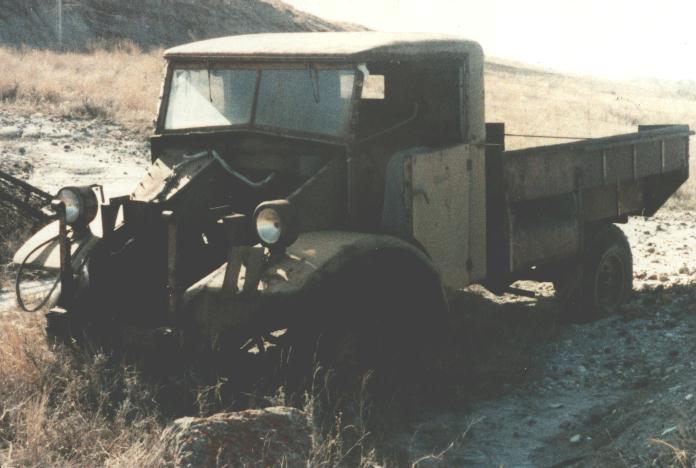
Early Ford F-8 as found in Estevan, Saskatchewan on a farm in very dry country. The PASS plate holder is still fitted on the left (port) front fender. Note that the short box was extended and the gas tanks are mounted as on the Cab 12 long box version. I cannot recall at the moment if this was a Cab 11 or Cab 12 truck. Rigid mirror arm and short box suggest that it is Cab 11. Ron Hammond of Moose Jaw, Sask., has restored it with the later Cab 12 “long box”.

1941 Ford F-8 – Circa 1944 colour photo of 2nd Battalion, Seaforth Highlanders of Canada unloading a 3 inch mortar from a 1941 Ford CMP Cab 12 F8 (long box version). The photo was taken during training, possibly on Vancouver Island. Colour slide. (Courtesy Seaforth Highlanders of Canada Regimental Museum.)
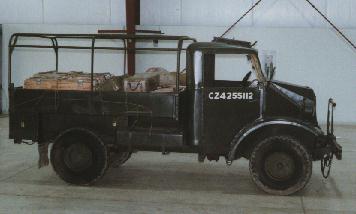
1941 CMP Cab 12 – F-8 8 Cwt. 4×2 Similar to Cab 11 but windshield opens, doors have hooks to lock them open for cooling, roof hatch for observer, radiator cap not exposed, alligator hood. This one was made on 11/11/41. NOTE: The bows on the F8 & C8 are VERY different from those on the 15 Cwt trucks.
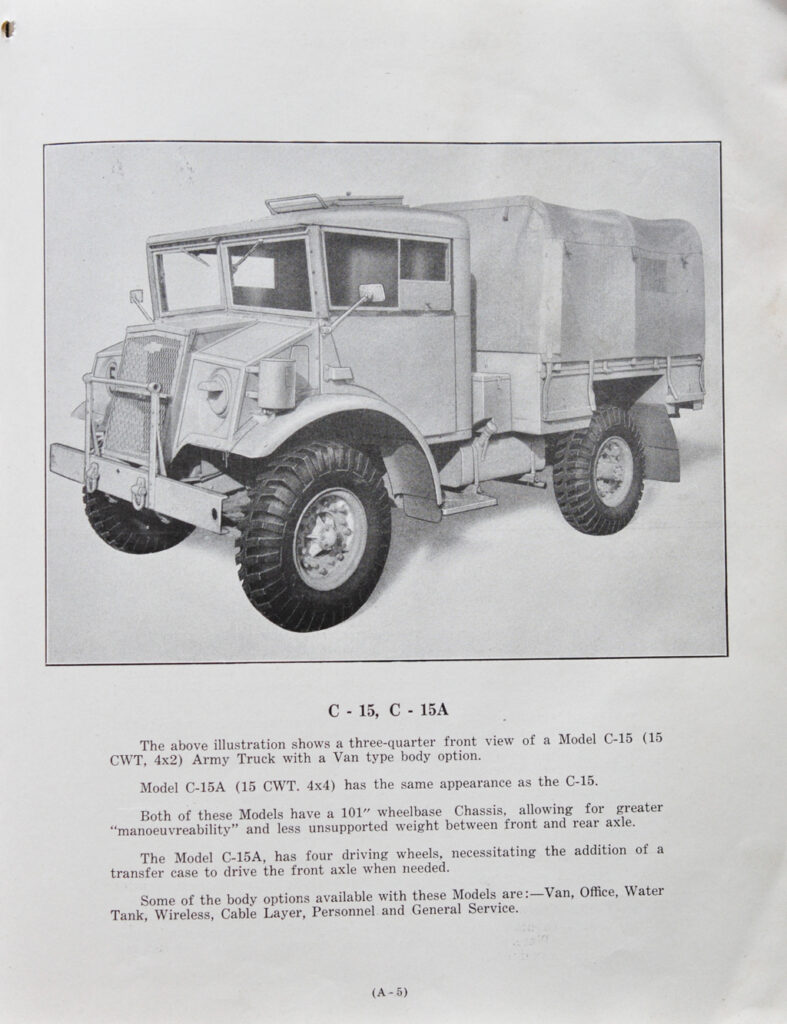
CMP Cab 13 (photo from WWII Chevrolet maintenance manual MB-C2) built from 1942 through 1945 . This is the most famous look of the Canadian Military Pattern vehicles.
IDENTIFYING CMP MODELS
Data plates are the first thing to look for. One early models they are often on the engine cover inside the cab. On late models they are usually on top of the dash over the instruments on Chevrolets, and on the driver’s door inside near the top on Fords.
If data plates are missing, Fords have year marked on ‘back’ of pintle hook. One can see it by climbing under the truck, and looking at the rear of the pintle hook. There is a circular hole in the mounting plates and one can usually see “FM Co 43” for example (as I recall, it is some years since I have looked). This example would be Ford Motor Company 1943.
Early models:
Cab 11 (1940 model) – Fixed windshield, no roof hatch, small hinged panel to access engine from outside. Suicide doors (hinged at back). Cramped cab. Headlights standing separate and on fenders (giving them the nickname “Monkey Face” down in southern regions of the world.
Cab 12 (1941 model)- The Cab 12 is basically the same as Cab 11 but had minor modifications done in response apparently to user feedback (aka complaints), especially from the North African desert. As per Cab 11 but windshield opens a few inches as a single unit, some models have a roof hatch. Large hooks on doors so they can be propped open about 6″. “Alligator hood” – better engine access. Vents incorporated on each side of radiator grill to provide moving (not necessarily cooler!) air to the cab when driving.
Cab 13 (1942-1945 model)- Total design change. Much roomier. Reverse slope windshield, doors hinged at front, headlights buried inside cowl. Some later models (1944-5) had round roof ‘hatch’ of canvas for observer. Early models of Chevs had “cluster” instruments and later models had separate round instruments.
8 Cwt (1/2 ton) – Tires 9.00×13 or 9.25×16 on HU 4×4 models. 101″ WB. No step under door to get into cab.
15 Cwt (3/4 ton) – Tires 9.00×16. 101″ wheelbase.
30 Cwt – 10.50×16 tires. 134″ WB
60 Cwt (3 ton) – 10.50×20 tires. 134″ or 158″ WB
“Z” was letter code at beginning of DND or WD number painted on the door. This was for trucks 8 Cwt or 15 Cwt. “L” was for Lorry which was the category for 3 Ton (60 Cwt). There are many other letter prefix codes but those are the most common.
This page is not the complete story. I have created a bit of an overview and have put in photos and information that you will basically not find elsewhere.
Initially these vehicles were based closely upon British War Department vehicles, but eventually Canadian designers convinced the authorities to allow them to use North American production techniques and design.
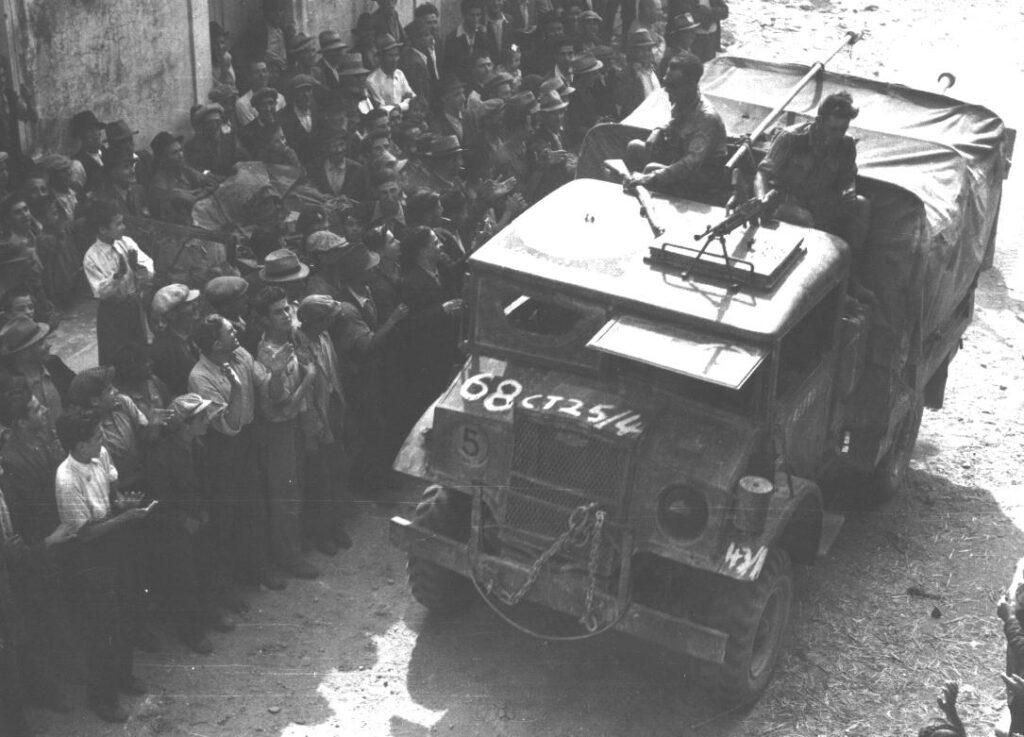
C15A Cab 13 of the Carlton and York Regiment (unit serial 43/1) in Sicily (or Italy) during WWII. It is towing a 6-Pounder anti-tank gun. The cleaning ramrod is lashed to the top of the truck. Bren gunner is sitting on spare tire. Note that on Canadian production CMPs, the hatch was for the observer to watch for enemy aircraft etc. The markings include what appears to be a roundel on the roof for air recognition, and very sloppy markings! Note the jeep in the crowd on the left. DND photo (cropped) 24170.
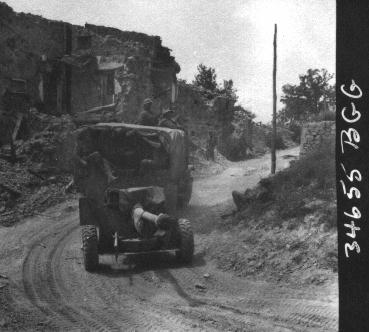
Canadian Army CMP 15 Cwt towing a 6 Pr anti tank gun in WWII. (DND photo 34655).
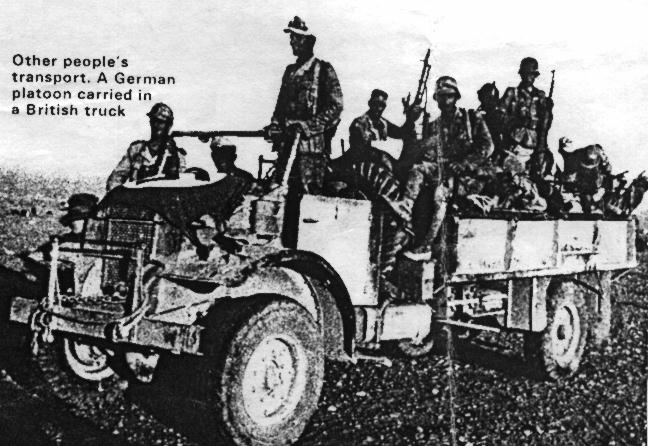
ABOVE: German Afrika Korps CMP For more such photos, look at books on the history of the Afrika Korps.
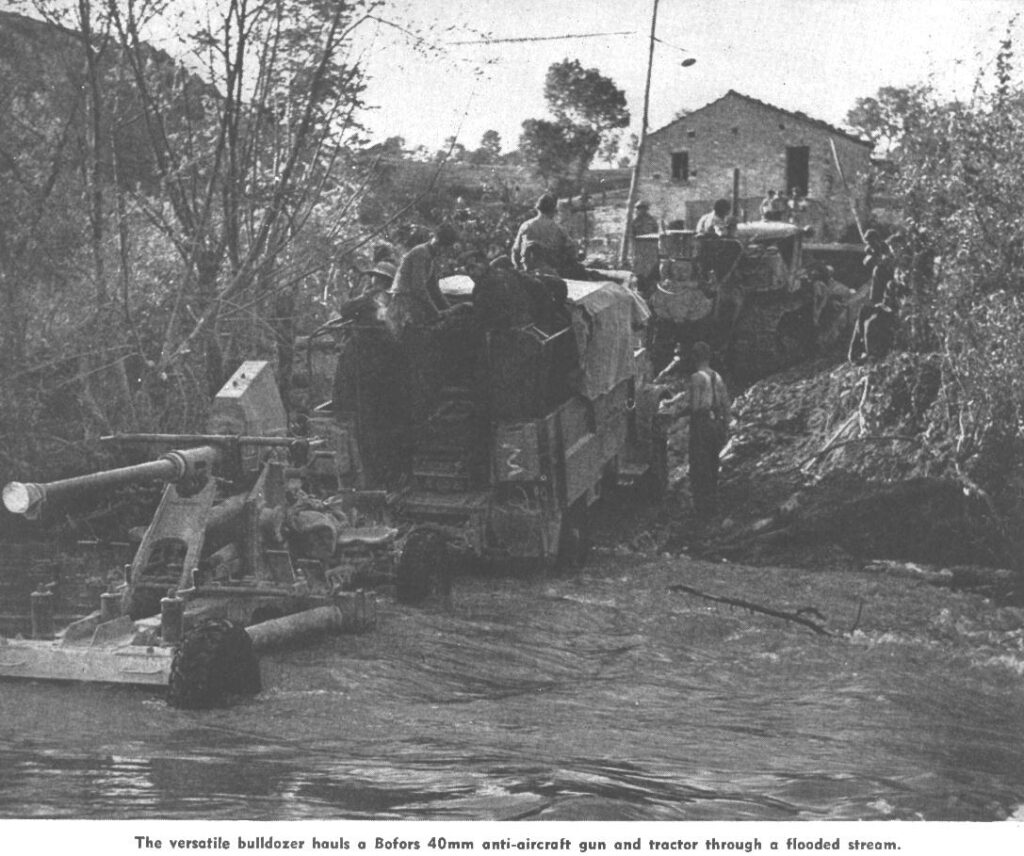
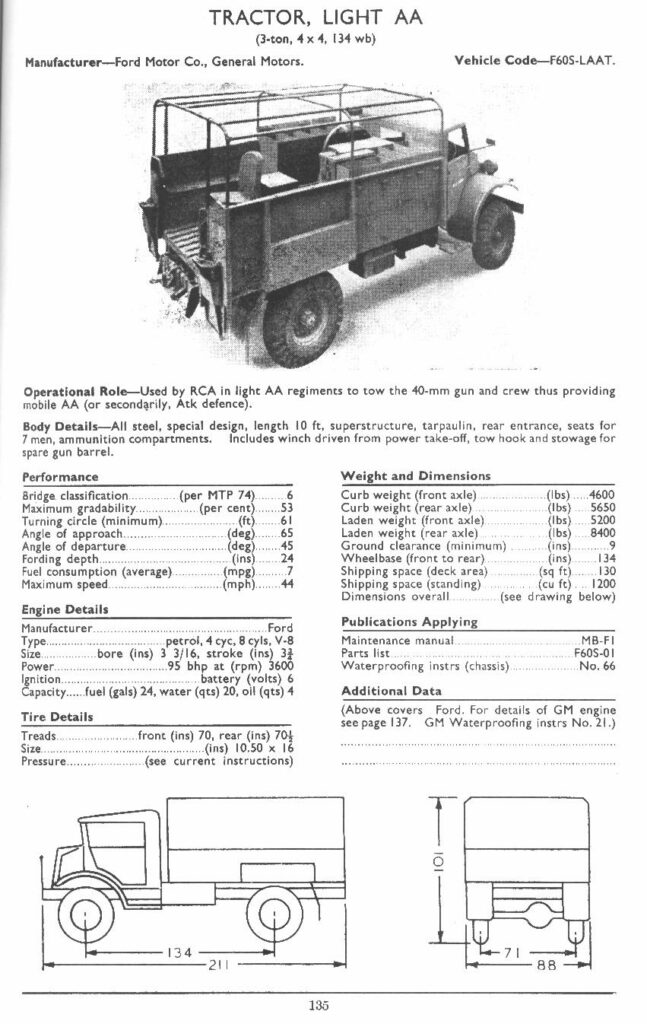
Bofors 40mm AA gun towed by a CMP LAAT truck in Italy 1943-1945 and page from data book showing the LAAT
After the British lost most of the vehicles at Dunkirk in 1940, they suddenly needed more vehicles and so ordered thousands from Canada. What had been known as Department of National Defence (DND) Pattern now became international in distribution and so now became known as Canadian Military Pattern – CMP.
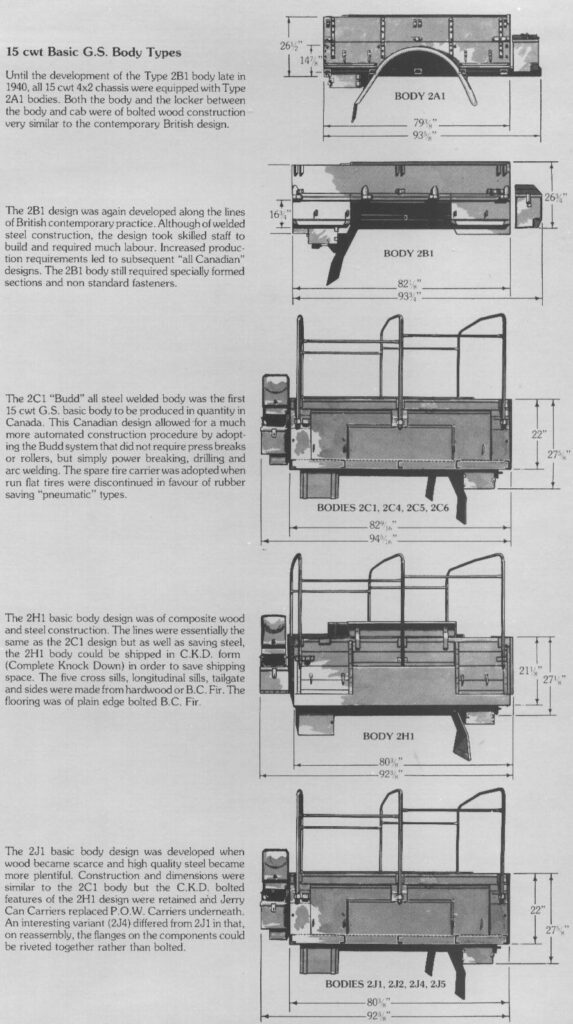
Other countries also ordered Canadian made vehicles. During the war, these included the UK, Australia, South Africa, New Zealand, India, and the USSR (after they changed sides in June 1941 when their ally Hitler turned on them).
The US military used CMPs in the Philippines when the Japanese invaded. These vehicles had been diverted from delivery to the Canadian troops in Hong Kong who had surrendered after bitter fighting in late December 1941.
By the time of the final battles in North Africa in 1942-43, over 80% of the soft skin vehicles used there by the British and Commonwealth Forces were Canadian made!
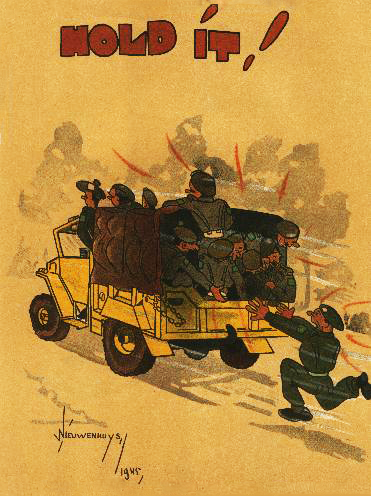
ABOVE: Dutch cartoon by Nieuwenhuys of CMP in Holland in 1945. From “daag The Canadian Army in Holland” It shows a CMP Cab 13 15 Cwt.
After WWII, Canada selected the 15,000 best vhicles and brought them back to Canada. Those that were left in Europe or elsewhere were sold off surplus or given to other countries.
As well, after WWII the United Nations stepped in to help the devastated nations rebuild and supplied thousands of surplus military vehicles (including many Canadian examples) to countries such as Czechoslovakia and Poland.
As part of NATO (North Atlantic Treaty Organization), Canada gave several divisions worth of artillery and vehicles to allies such as Belgium and Italy.
Those 15,000 excellent condition vehicles, and the spare parts, were mostly sent back overseas once again.
UNFORTUNATELY the result of this is that MOST Canadians have never seen a CMP vehicle and would not recognize one. Many assume they are a British truck. Ironically the CMP vehicles are more common and better known in places such as Myanmar (Burma), Australia (“Blitzes”), New Zealand (Puddle Jumpers or PJs), Argentina (camiones Canadensis), the UK, Holland, Norway, Belgium etc.
“AS FOUND” CMPs
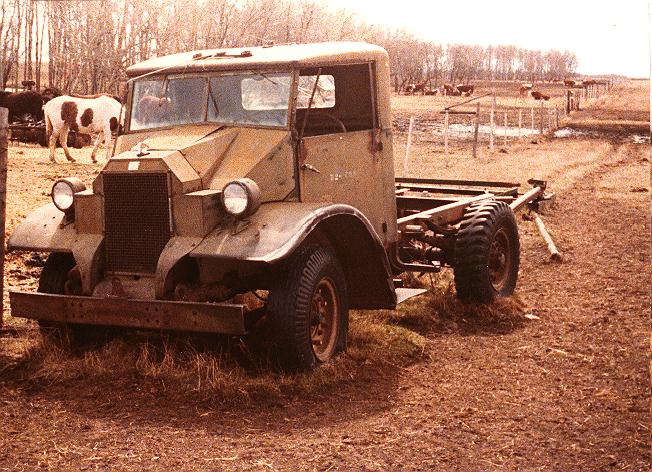
May 1979 photos – Albert Beach’s F15 as found by Colin Stevens I first saw it in May 1978 – on a rainy day – following a tip from Bernie Nash. I have colour slides of it looking the same – but wet. It was sitting in Mr. Beach’s cow pasture, 10 miles north of North Battleford, Saskatchewan. It is a very early F15 (about May 1940) as it does not have the cooling vents on each side of the radiator. It would have had the wooden tool box, no spare tire carrier, and rounded rear wheel arches cargo box 1B1. Last run circa 1975, it was not for sale in 1979. It may still be there. The old DND number was 42-1-??? and new DND number was 72-??? (last parts were painted over). The Formation sign was a yellow (?) maple leaf on a light blue (?) background (possibly 3rd Cdn Div before they went overseas?). The unit sign was blue “11” on white (?).
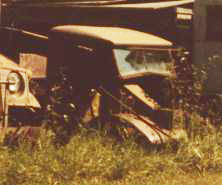
F-8 found by Colin Stevens in the late 1970s in Saskatchewan. Photo taken after Mickey Zwack had salvaged it and brought it to his farm in Prince Albert, SK.
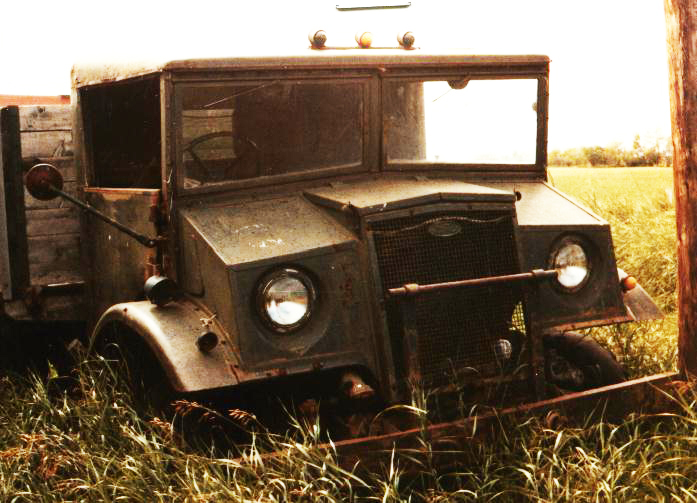
1942 CMP Cab 13 F15A found by Colin Stevens 6.2 miles north of Glasslyn, Saskatchewan in August 1979. I mile south of gas station & store. Off to west of highway, just north of a trailer home. It was owned by Mr. Harrison. It was not for sale at the time but … Chassis F15441-M; Chassis Serial Number 47638; Engine SN 3G-28734-1; Contract CD-312; Built May 4/42. DND number on door “Z” over “54-007”. Other markings there but were painted over.
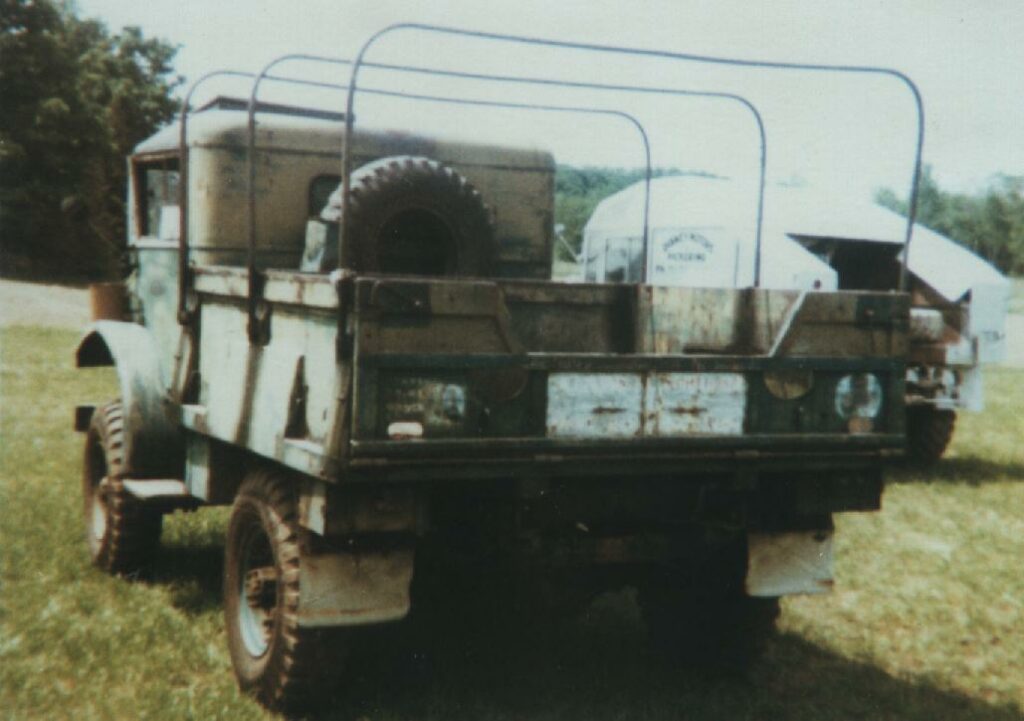
CMP Cab 13 15 Cwt as found by Dr. Bill Gregg. One could still read the markings on it. Doors still marked P.O.W.R. (Prince of Wales Own Regiment). Silver painted Cab 11 CMP FAT is the one that Bill Gregg traded to CFB Petawawa. Note that the back centre section was cut out. The large white rectangle has CAUTION RIGHT HAND DRIVE NO SIGNAL (or SIGNALS?). The red 3 leaf cloverleaf on a white circle for No. 2 M.D. is visible as the formation sign on the right. This truck is now in the RCA Museum collection at CFB Shilo, Manitoba. It was tremendously important because it was complete and had all of its original markings. I hope that it has been preserved this way.
Very few have been fully restored in Canada. One problem is that tires and parts are VERY hard to find. Most CMPs found in Canada have been worn out and butchered on farms, logging camps and mine sites.
PRESERVED CMPs
Some of the better collections in Canadian museums include the Canadian War Museum in Ottawa, Ontario, and the RCA Museum in CFB Shilo, Manitoba. CMPs can also be seen in the Ashton Garrison Museum in Victoria BC and other places.
Special thanks to two great Canadian patriots who personally saved many CMPs and then donated them to Canadian museums. The late Dr. William Gregg who passed away in 2000, of Rockwood, Ontario and Brian Wood of Vancouver, BC.
In memory of my good friend Peter J. Ford.
Peter J. Ford, a noted Canadian researcher and collector of Canadian Military Pattern vehicles, died suddenly at home 4/5 November, 2000, apparently from a heart attack. He was Godfather to our daughter, and I am Godfather to his youngest daughter.TECHNICAL INFORMATION
Peter was the publisher and author of CMP-INFOEX which listed thousands of Canadian made vehicles, manuals, contract numbers etc. Peter will be greatly missed by the military vehicle preservation fraternity.
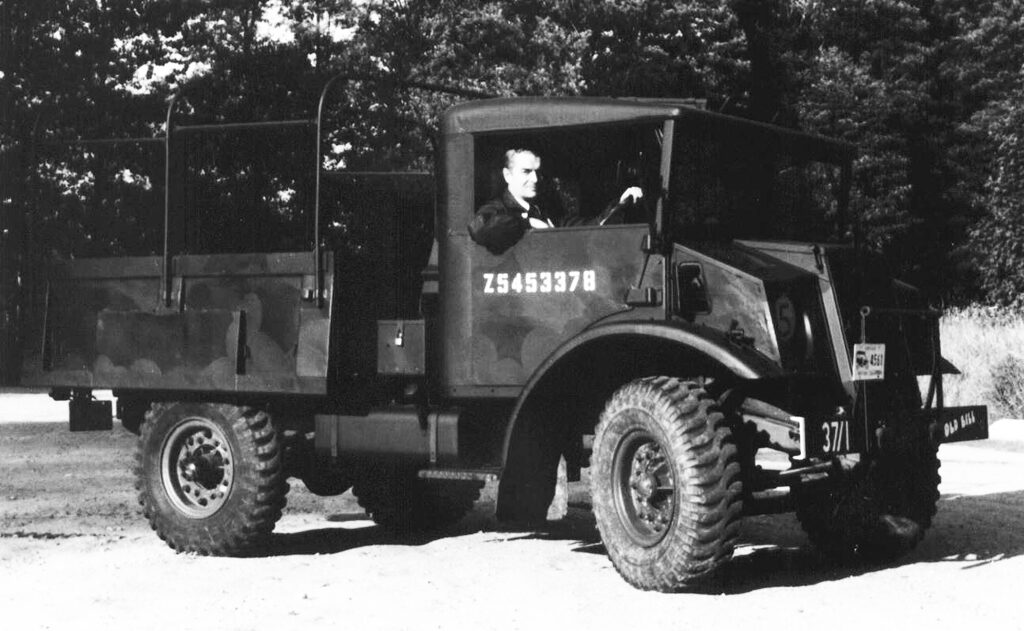
Peter J. Ford at the wheel of “OLD BILL” in Burnaby, BC,
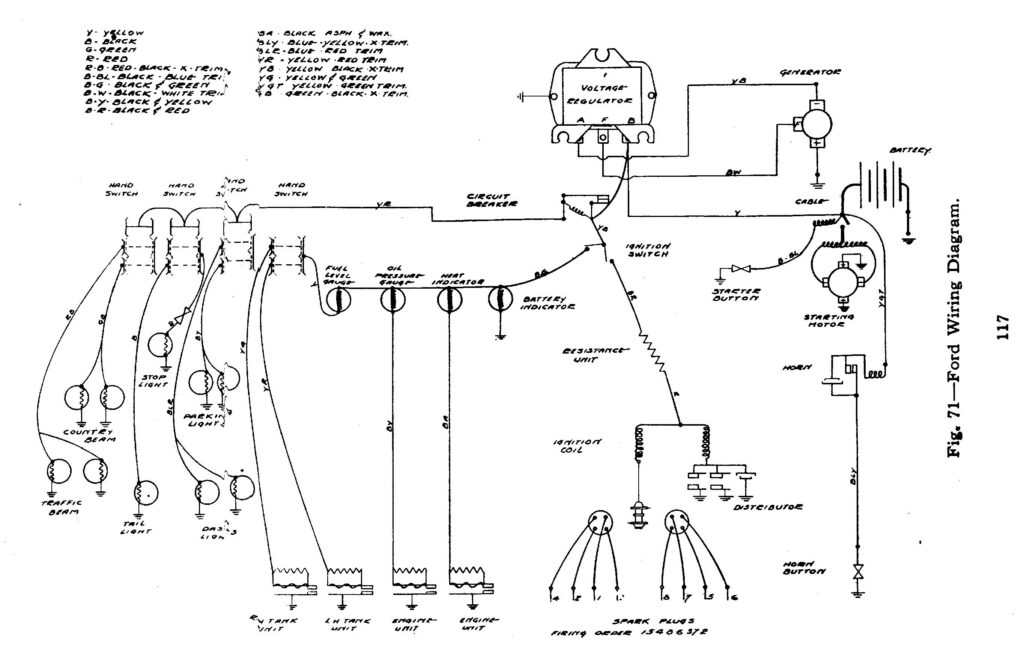
Ford wiring diagram Cab 11 from March 1940 Operator’s Manual.
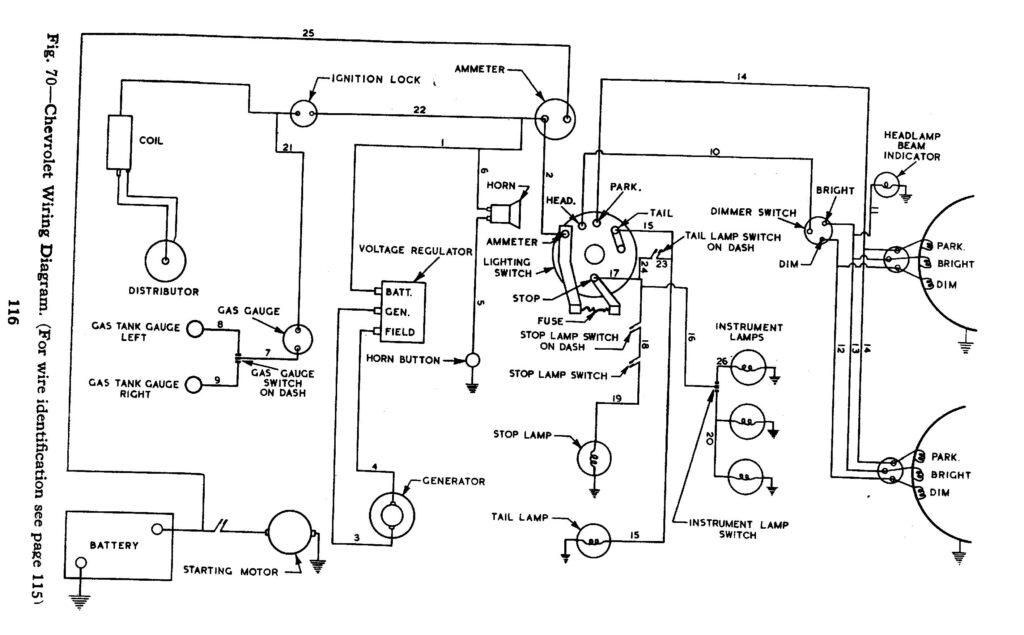
Chevrolet wiring diagram Cab 11 from March 1940 Operator’s Manual.
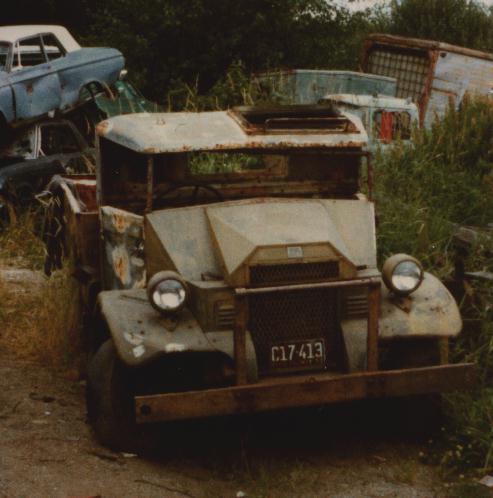
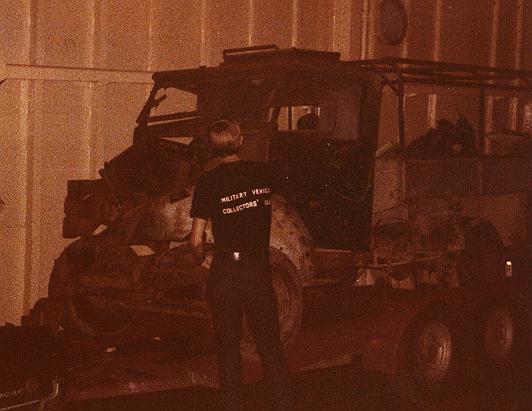
-
-
-
Military Vehicles
-
Military Vehicle Markings
-
My Military Vehicles
-
BSA Airborne Bicycle
-
Welbike
-
Canadian Military Pattern Vehicles (CMP) (this page)
-
Modified Conventional Pattern Vehicles (MCP)
-
Standard Military Pattern Vehicles (SMP)
-
Jeeps & Canada
-
Trailers
-
Return to Military Vehicles page
-
RETURN TO HOME PAGE
-
-